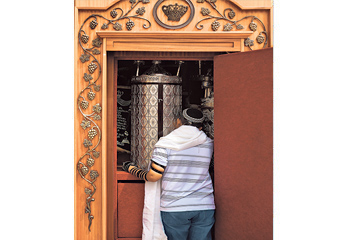The early 21st century witnessed the emergence of an “open Orthodox” Jewish trend that, among other things, celebrates increased involvement of Jewish women in public ritual and religious leadership positions, is more welcoming to Jews who identify with the LGBTQ community, and emphasizes the positive aspects of other Jewish denominations.
These policies and the training of individuals to espouse them have been met with sharp rebukes from other established Orthodox sectors. The rifts raise the spectre of an imminent rupture between those who embrace core values of current general society on one side, and a coalition of traditionalists, who only reluctantly engage contemporary culture, together with those who reject it completely, on the other.
The argument that North American Orthodoxy is on the verge of a more permanent split is buttressed by greater affinity than in the past between the more conservative elements of modern Orthodoxy and prominent sectors of the haredi camp. A noticeable segment of those within the modern Orthodox orbit have gravitated toward haredi-like attitudes, such as stricter interpretations of Jewish law and alienation from popular culture, often embarking on this direction during formative stints in Israeli yeshivas and seminaries. This is especially apparent among those who choose rabbinical careers and eventually set the tone for their synagogues and schools.
READ: MODERN ORTHODOXY AT THE CROSSROADS
In parallel, other differences between the modern Orthodox and haredi Orthodox Jews have become less pronounced. The latter increasingly attain academic degrees, are outspokenly pro-Israel, and are less homogeneous in dress and cultural habits. They are also more apt to co-operate with the entire spectrum of North American Judaism, especially when the goal is outreach. The same motivation has led to haredi encouragement of dynamic female religious leaders – of course, with the caveat that these figures have nothing in common with their much-vilified open Orthodox counterparts.
The new haredi/modern Orthodox coalition also shares certain common concerns regarding Israeli society with Israeli haredim and the National Religious groups known as “Hardal.” They vociferously oppose civil marriage in Israel, advance stricter standards for conversion by Diaspora rabbis, and refuse any compromise regarding non-Orthodox conversions.
Under such circumstances, it is possible that the open Orthodox will feel sufficiently estranged from the Orthodox centre to form an alternative “avant garde” alliance with burgeoning post-denominational egalitarian communities. My stronger sense, however, is that North American Orthodoxy will not dissipate into fully independent streams. The broad coalition may loosen and be even less capable of finding common ideological ground. On certain legal issues, there will be vociferous – some might say healthy – disputes. Nonetheless, today’s very broad and ideologically diverse Orthodox constituency will remain connected by the foundational value that all its parties share: common observance of Jewish law and customs.
There are precious few cases, if any, in Jewish history in which Jewish factions that were at strong ideological odds but remained committed to observance of rabbinic law completely detached from each other. To offer two relatively recent examples, the chassidic-mitnagedic battles were vicious and were highlighted by excommunications and considerable verbal and physical violence. Yet at the end of the day, neither of these arch ideological opponents renounced connections with one another. Similarly, the separatist and communal unity camps within German neo-Orthodoxy were mutually belligerent, but their children still attended school together.
Through extensive travel to Orthodox communities throughout North America, I have learned that much of the verbiage and hostility that dominates printed and virtual media, does not necessarily play out in grassroots settings. Indeed, in many Orthodox locales outside major population concentrations there is less antagonism toward liberal voices and more co-operation between Orthodox rabbis from across the spectrum as well. The lesson we might absorb (perhaps with inspiration from last week’s U.S. election) is that one must guard against impressions based exclusively on the most visible centres.
READ: CONFERENCE DISCUSSES STATE OF MODERN ORTHODOXY
Our contemporary social atmosphere celebrates diversity, rather than mourning it. Moreover, beyond historic divides between Chassidim and Mitnagedim, Zionists and anti-Zionists, modern Orthodox and haredim, today there are Israeli and Diaspora Orthodox, settlers, hilltop youth, bourgeois urbanites, and kibbutzniks, quietistic Chabadnikim and open messianists, Carlebachists, Nah Nah Breslovers, and even spiritually questing “Chabakukim” – Chabad, Breslov, Carlebach, and Kook – and that’s without even touching upon the multiplicity of subgroups emanating from the Sephardic/Asian-African Diaspora.
Under such circumstances, there is also room in the Orthodox coalition for outspoken feminists and borderline pluralists who are allegiant to Jewish law but seek to push the envelope toward novel leniencies.
Prof. Adam S. Ferziger holds the S.R. Hirsch Chair for Research of the Torah with Derekh Erez Movement in the Israel and Golda Koschitzky Department of Jewish History and Contemporary Jewry at Bar-Ilan University, Ramat-Gan, Israel. He is co-convener of the annual Oxford Summer Institute for Modern and Contemporary Judaism, University of Oxford, UK. His most recent book, Beyond Sectarianism: The Realignment of American Orthodox Judaism was accorded a 2015 National Jewish Book Award.
